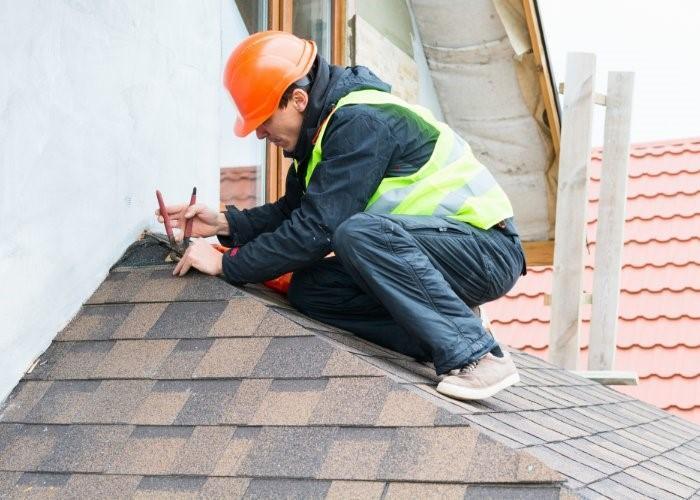Table of Contents
There’s no doubt that proper roofing is a crucial aspect of every home; the rooftop plays a vital role in protecting your entire home and every person and belonging inside it. An adequate roof efficiently regulates extreme temperatures during summer and winter. When your roof becomes worn down, it allows for water leakages that can cause severe damages to parts of your home, such as floors and walls, making them rot or crack.
A sturdy, appealing roof is a central selling point that can increase a home’s value. Many potential homebuyers are quickly attracted to a house whose roof is in pristine condition. It’s indisputable that a proper roof maximizes the aesthetic appeal of your home; it inevitably improves its curb appeal, thereby making a pleasant impression.
Perhaps, that’s why many homeowners desperately try to figure out the last time their previous property owners replaced their roof. Knowing how old your roof is and when it’s due for replacement helps you plan appropriately towards improving it.
Your entire roof serves as a buffer against the harsh elements. Atmospheric forces such as strong wind and rain can easily rip through old roofing, making your overall home unstable and messy. This piece, therefore, helps with essential tips for determining when your roof was last replaced.
This article is brought to you by the professionals at Lewisville Roofing Company. We are the local experts for roofing Lewisville TX.
How old is an old roof?
The durability of your roof is ultimately dependent on the outer roofing material utilized. For example, according to Guardian Home, slate and tile roofs can last more than 50 years. On the other hand, wood shingle roofs would typically span between 15-20 years, while asphalt shingle/composition roofs last up to 20 years or more.
However, extraneous factors, including proper maintenance, climate, and weather conditions such as rain, snow, and moisture, can all impact the lifespan of your rooftop. Moreover, it would help to do routine inspections to prevent your roof from becoming worn down earlier than expected.
After how many years should you replace your roof?
Sadly enough, many homeowners start contemplating roof replacement when it starts leaking or displays signs of failure. However, National Roofing Contractors advised inspecting the condition of your roof at least once yearly for potential problems. A minor roof repair will gradually expand and eventually worsen, and paying heed to early warning signals like small cracks and holes, moisture, or water damage will help prevent extensive damage.
What’s more, there’s a generally suggested time frame for roofing replacement based on the material used. For instance, it’s expected that Composition Shingles will last between 12-30 years; while Asphalt Shingles can span 15-30 years, Wood Shingles and Rubber Roofs typically last between 20-25 years and 30-50 years, respectively, and Metal Roofs lasting 50-75 years.
However, this roof replacement time frame is contingent on the climate conditions of your location, and extreme humidity and winters may rapidly wear down these materials. It would help if you contact roofing professionals to inspect the condition of your roof after a strong wind or storm.
How long are roofs usually under warranty?
Warranties are critical to your roofing project as it provides a sort of lifelong insurance cover. Typically, there are two types of rooftop warranty: artistry warranty and roofing material warranty.
Most of the roofing warranties come from the manufacturers of your shingles which typically range from 25- 30 years. Nevertheless, some warranty options span 50 years. It’s expected that every roofing contractor puts a roofing security cover that protects you from inadequate roof installation.
In other words, if your roof becomes faulty after installation, the contractor is bound by the contract to fix it. It would help if you always looked for contractors with a track record of excellent customer service and proper roof installation. However, craftsmanship warranties vary from contractor to contractor, and they commonly range from 2, 5, 10, to 25 years. Some may offer guarantees as long as the rooftop lasts or as long as you live in the house.
How expensive is a new roof?
The average national cost for roof installation, according to HomeAdvisor, is about $8,528. Depending on the material and location used, roof replacement typically costs between $3.50 and $5 per square foot. Labor costs are about 60%, while materials are 40%.
However, roofing materials alone can cost between $100 per square foot to $1000 per square foot, depending on the material used.
5 professional tips to determine the age of your roof
The following are five warning signs that show you need to replace your roof:
Your roof has become old
Knowing the average life of the materials your roof is made of is important for pinpointing when a replacement has become necessary. For example, asphalt shingles last between 15 to 30 years while metal and tile materials tend to last longer. If your roof is reaching its specific expiration date, it’s time you started considering replacing them.
However, some homeowners opt for overlaying- a process whereby roof repairs are installed over the existing roof- a temporary fix that may hide severe damage underneath the shingles. It would help if you considered overall roof replacement. Some of the signs your rooftop is old are:
Curly or missing shingles
The roof is the exterior part of the home that offers protection to both external and interior members; as such, it’s mostly affected by climatic conditions and weather. The continual exposure to elements can cause broken or missing shingles. Moreover, seeing granules in your eaves trough is a clear indication that your shingles are rotten. Also, missing shingles will make your home vulnerable to harsh elements.
When your flashing is broken or damaged
Worn-out flashing means your roof is susceptible to water damage as it helps prevent moisture from entering the joints of the roofing system. Flashing is typically made of tar, cement, or metal, depending on the quality of your rooftop.
Discolored walls and ceilings
A strange tint on your walls or ceilings is a strong signal that your roof is old and has become leaky. When the insulation under the attic is soggy, it showcases your rooftop is faulty.
Ask the previous owner of your home
Inquiring from the former occupant of your home is a quick method of figuring out the age of the rooftop.
Contact the roofer who completed the roof install on the house
This means it can be a bit challenging tracking down the company that installed the roof, but it will pay off if you’re lucky enough. You can use Google to track down local roofers, and a few calls may bring forth positive results. You can also ask the previous owner if they saved the receipt from the roof installation.
Hire professionals to inspect the condition of the roof
A professional roofer with many years of experience can easily estimate the age of your rooftop by checking wind damage, hail damage, and tile damage. He’ll be able to offer expert advice.
Check the building permit for the roof
A building permit will give you a clue by checking the date the building permit was filed, as this will be proximate to the time the rooftop installation was done. However, some states don’t require a license for roofing.
Conclusion
It’s of great importance for homeowners to be mindful of the age of their rooftop to enable them to do proper planning towards replacing them in due course. Bottom line: knowing beforehand when to reroof your home and what to expect during the installation gives one the flexibility of making a sound financial decision.




